iFi xDSD DAC/AMP Review – The Prodigy
iFi made a nifty little device, that can do a little of everything, and which doesn’t fail in any way to satisfy the needs of the modern audiophile, including the need of a nice-looking device, making xDSD is easy to recommend to anyone looking for a simple-to-use, ergonomic and versatile device that can power almost anything that’s portable, and which can sing any way your heart desires.
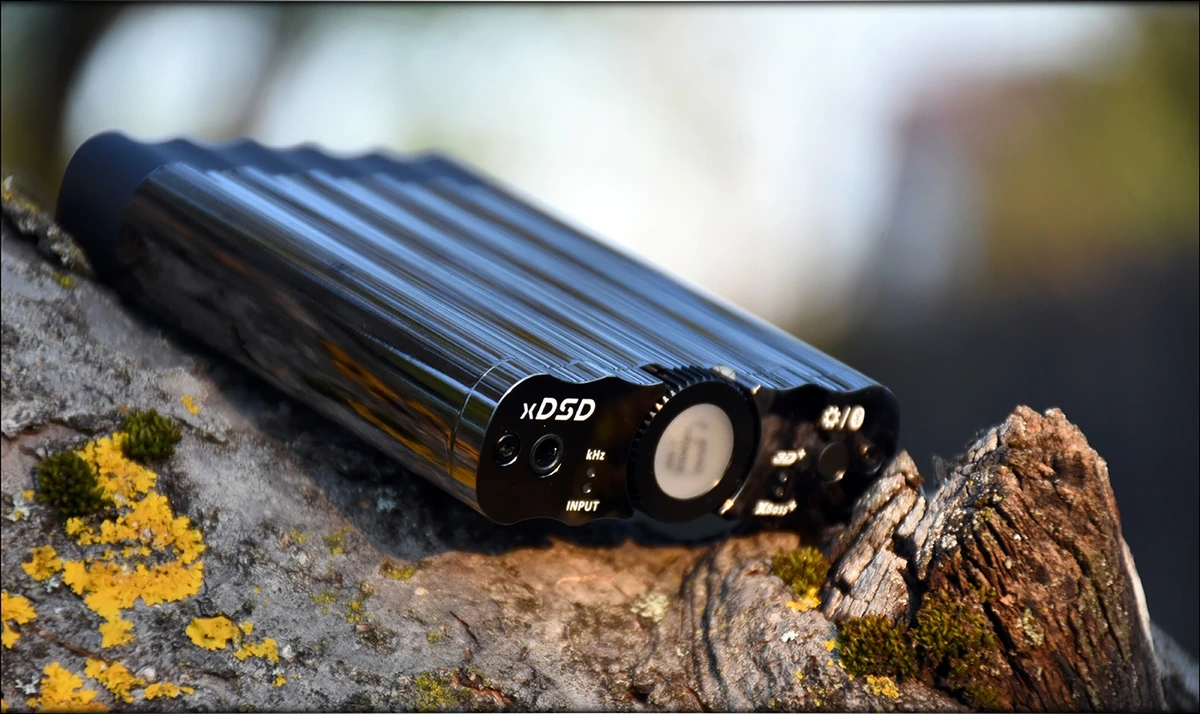
Introduction
iFi xDSD is the new DAC/AMP from iFi, coming to replace and redefine what iFi products are, with a much more stylish design, a much more smaller shape, and promising a sound that will make it worthy of being an iFi product. We’ll see what it is capable of, and whether it deserves its place amongst other iFi products.
iFi Audio is a large audio company from UK, part of the respected AMR Group (Abbingdon Music Research). They are exemplary in every way possible, when it comes to customer satisfaction, finding answers to any issue a customer has, and to being generally very friendly. You can always rely on iFi for warranty, and you can expect the best experience by purchasing from and working with them.
It should be noted that I have absolutely no affiliation with iFi, I am not receiving any incentive for this review or to sweeten things out. This review is not sponsored nor has been paid for by iFi or anyone else. I’d like to thank iFi for providing the sample for the review. The sample was provided along with iFi’s request for an honest and unbiased review. This review reflects my personal experience with iFi xDSD. Every opinion expressed is mine and I stand by it, the purpose of this review is to help those interested in iFi xDSD find their next music companion.
Product Link
You can get the mighty xCan from www.amazon.com here: https://www.amazon.com/Portable-Headphone-Amplifier-Bluetooth-Connectors/dp/B07FTFZ8WF/
Packaging
First things first, let’s get the packaging out of the way:
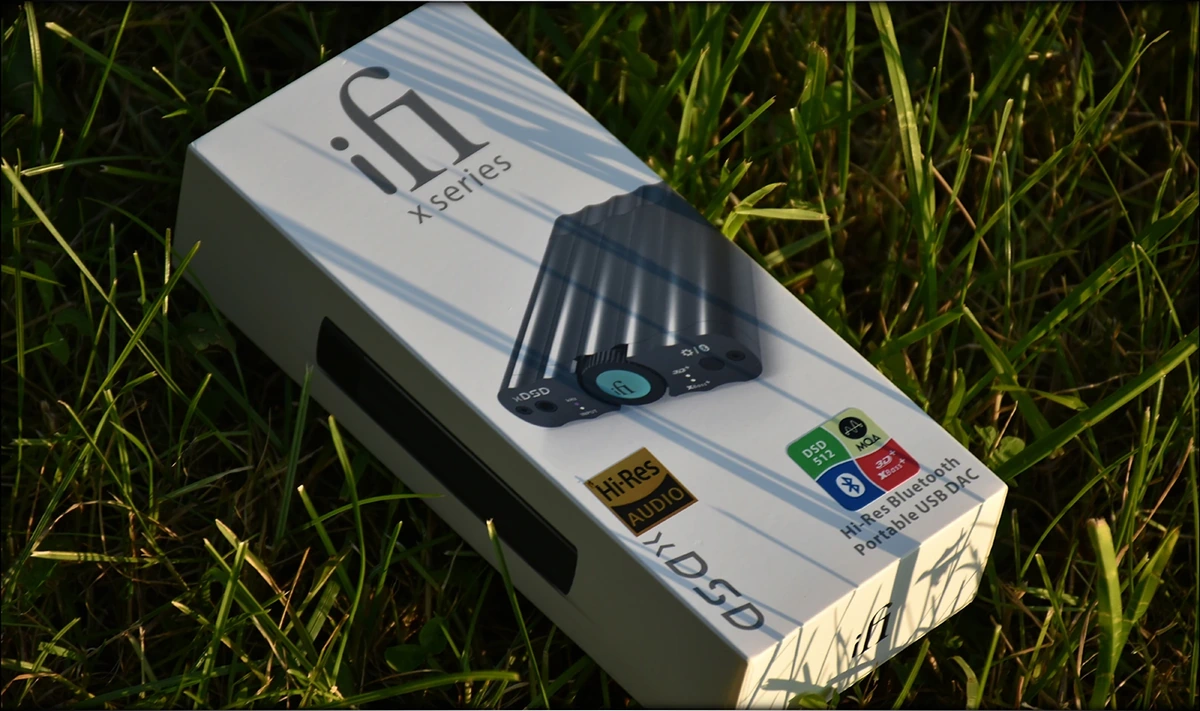
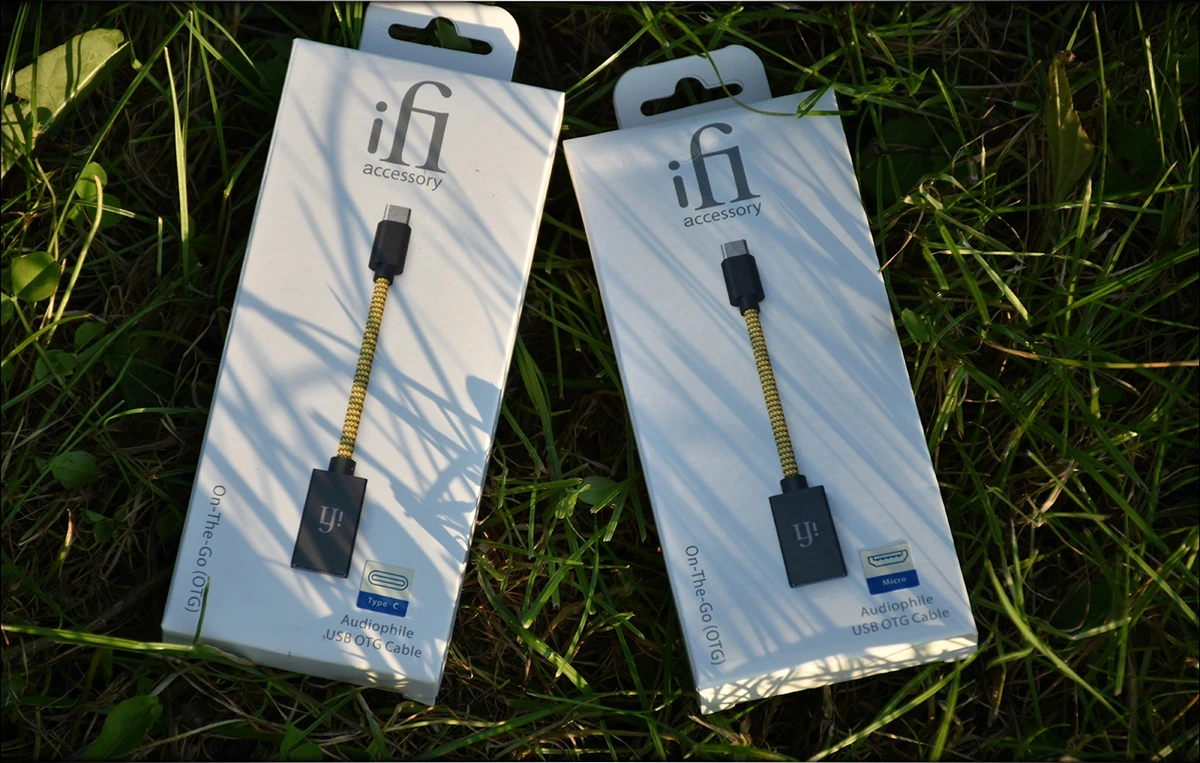
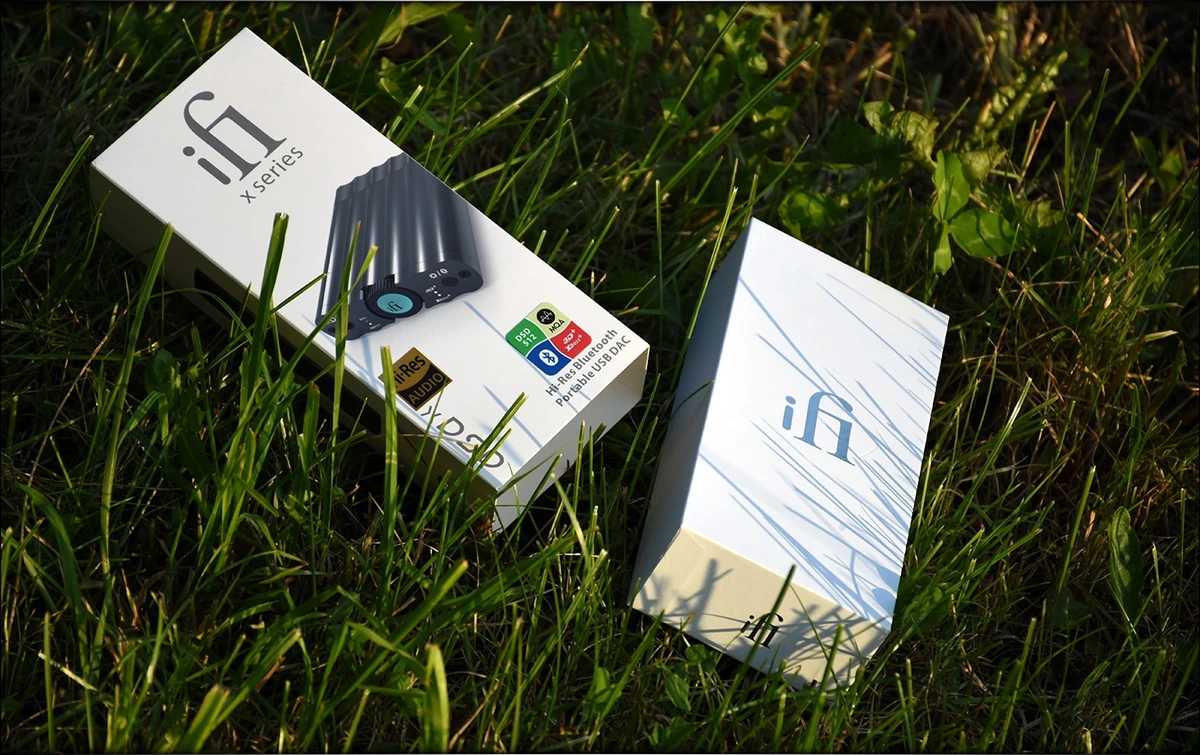
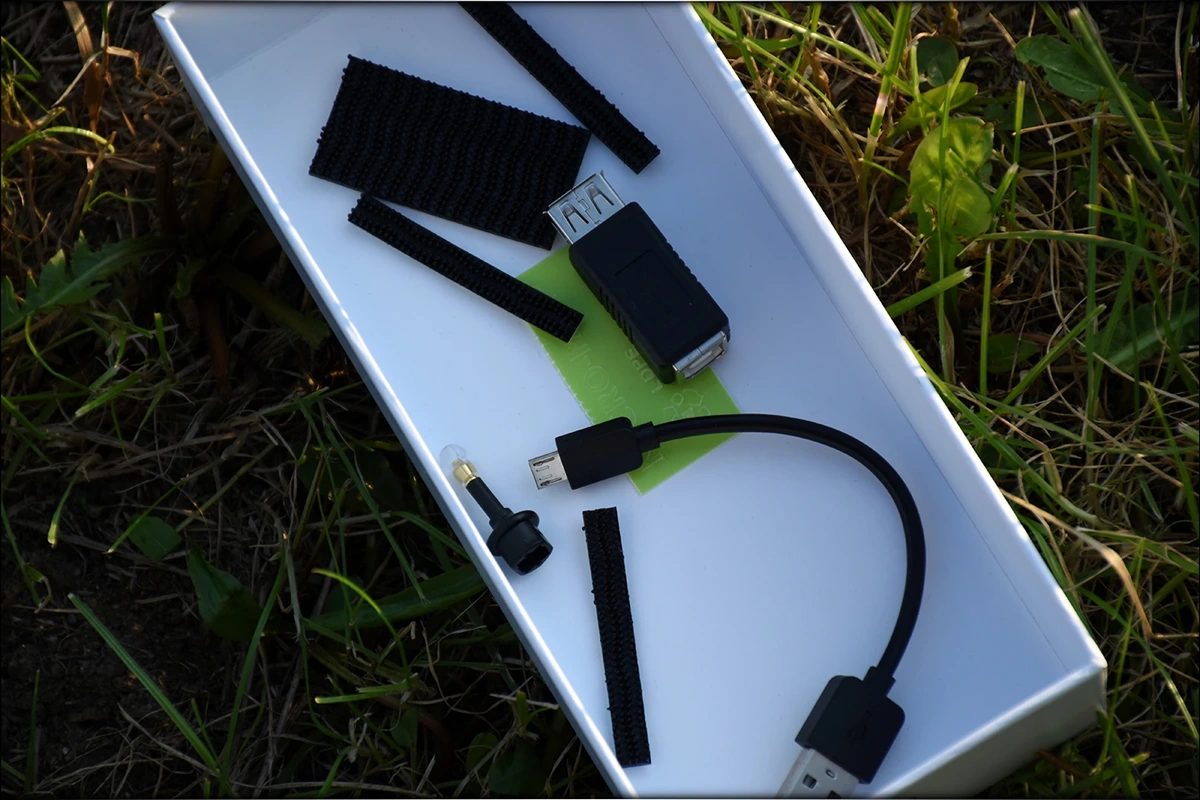
iFi’s package hasn’t changed much since I first reviewed iDSD Black Label, which was years ago now, but still, that one is going strong. Fast forward to today, we’re being introduced to a much smaller package, which still keeps the amazing attention to detail, and the large number of extras we’re used to seeing from iFi. I am quite happy that iFi is keeping a tradition from including useful extras with their products, and there’s hardly anything I can think off that would be further needed, compared to their package formula.
With xDSD, you get:
xDSD Unit
OTG Cable for MicroUSB (basic black one)
USB Adapters
Velcro Lock strips that you can glue to xDSD, as well as to your transport for it (No straps stacking!)
More USB Adapters
A carrying and protection pouch
In fact, now that I typed that list, there is something I think I’d want with this package, and that is a Type-C OTG Cable, but happily iFi designs and sells some high-quality ones on their site. Those iFi OTG accessory cables are much better than the original ones, they are harder, they keep memory of the shape you give them, so they stay bended (not pulling on the connectors after you connect them), and they feel quite nice, having just the right length for me.
For the record, I’ve been using the Type-C iFi OTG Adapter for xDSD and my smartphone for the past 2 months or so, and I can say with 100% certainty that it causes no damage to the smartphone’s jack, even though I often throw them in my pocket, so you can totally get one if you want a better OTG cable, for ergonomics and overall quality. I can’t say I noticed any significant sonic difference, but given the affordable nature of an OTG cable, I’d rather use a good one.
Technical Specifications
USB Input: up to PCM768kHz & DSD512 (24.6/22.6MHz)
S/PDIF Coaxial and Optical Input: up to 192kHz/24Bit
Dynamic Range: > 113dB (A)
Volume Control: -101dB…0dB in 1dB steps
Output power: > 2.82V/500 mW @ 16 Ohm
> 3.7V/270mW @ 50 Ohm
> 3.8V/48 mW @ 300 Ohm
> 3.8V/24 mW @ 600 Ohm
Line out Level: > 2.1V @ 0dBFS (& 0dB Volume)
THD &N (1V/16R): < 0.005%
Output Impedance: < 1 Ohm
Battery: 3.8V/2200mAh
Dimensions: 95 (l) x67 (w) x19 (h) mm
Weight: 127g (0.28 Ibs)
Build Quality/Aesthetics/UI/Firmware
iFi xDSD is quite different from the typical industrial-looking device iFi created so far, this time their design being a very smooth and liquid one, xDSD feeling like a true high-end tech piece you’re carrying with you. People will be pleased seeing you carrying one, and it really looks pretty.
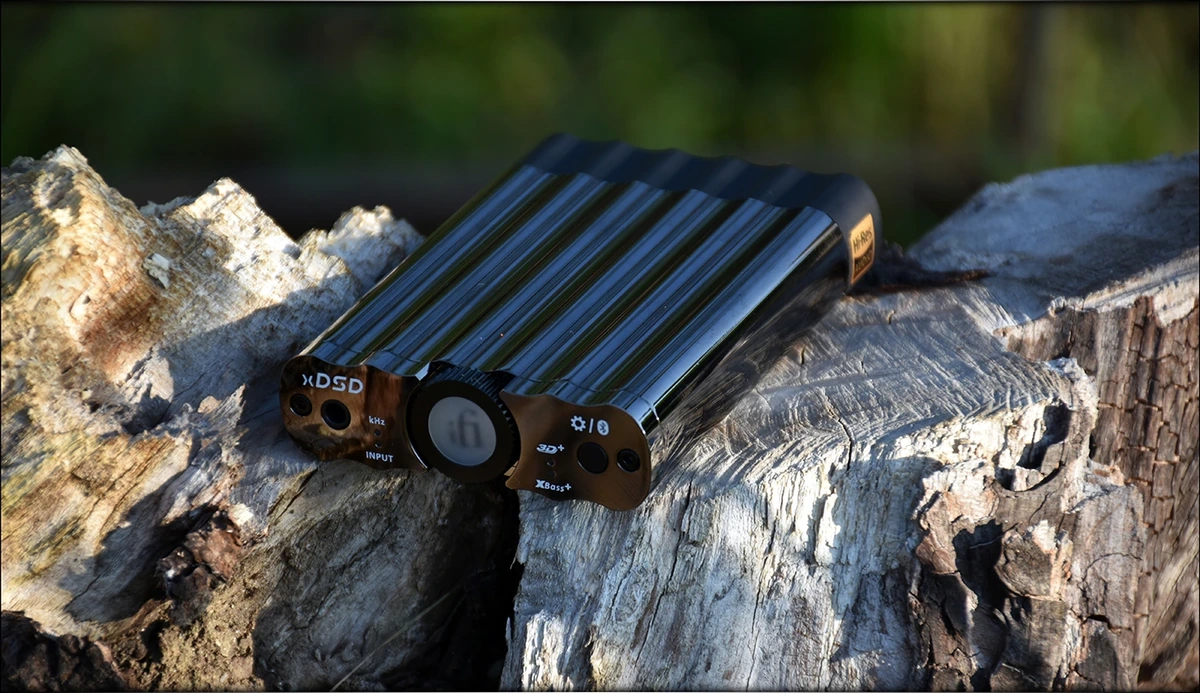
The finish on it is fairly good, although if you want to avoid scratches, you should take care of it. Like, it is one of those mirror-style finishes, and although it seems fairly resistant to scratches, I wouldn’t place it in my pocket right next to my keys.
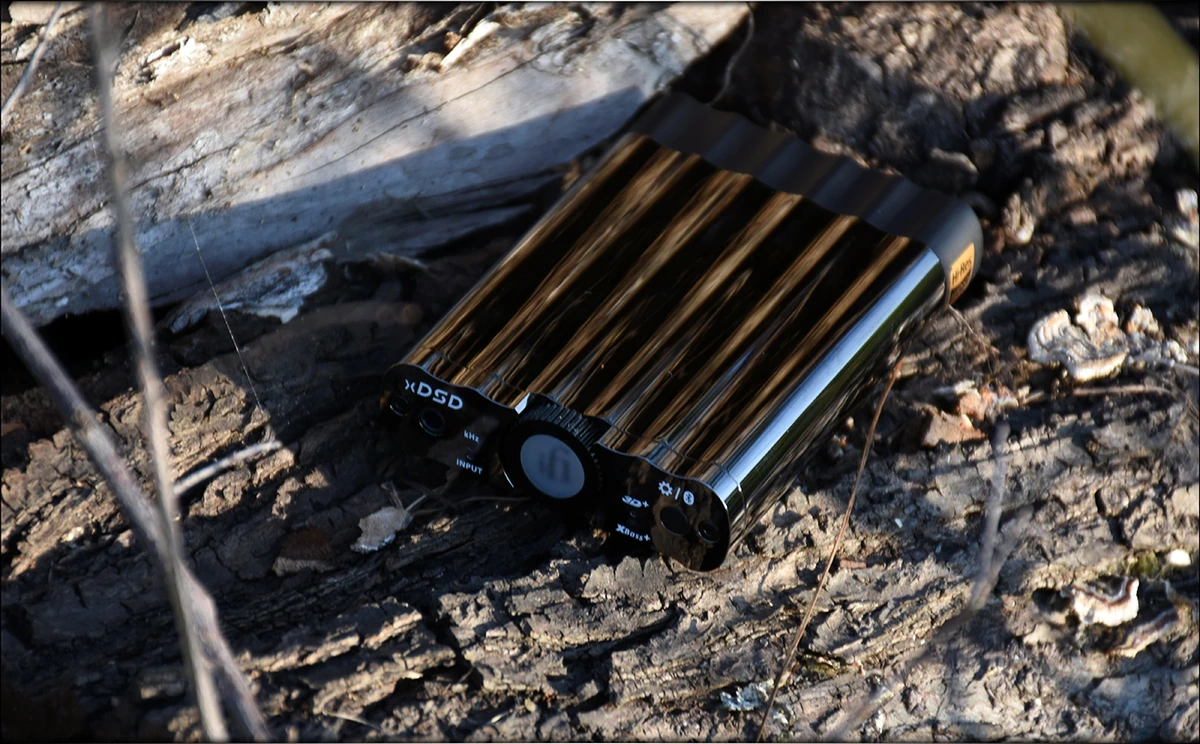
This being said, the build quality, is exceptional, this is one tightly packed device that feels like a solid cut of metal, no loose connectors, no loose ends. The glossy, well polished finnish is stunning, but it is prone to fingerprints. The volume wheel is a digitally controlled analogue volume control unit, and this basically means that you don’t have to deal with channel imbalance at lower volumes, but you don’t get the reduced detail of a digital implementation, the best of both worlds. To explain what this does, basically, the volume acts on a digital control, which then acts on an analogue control unit.
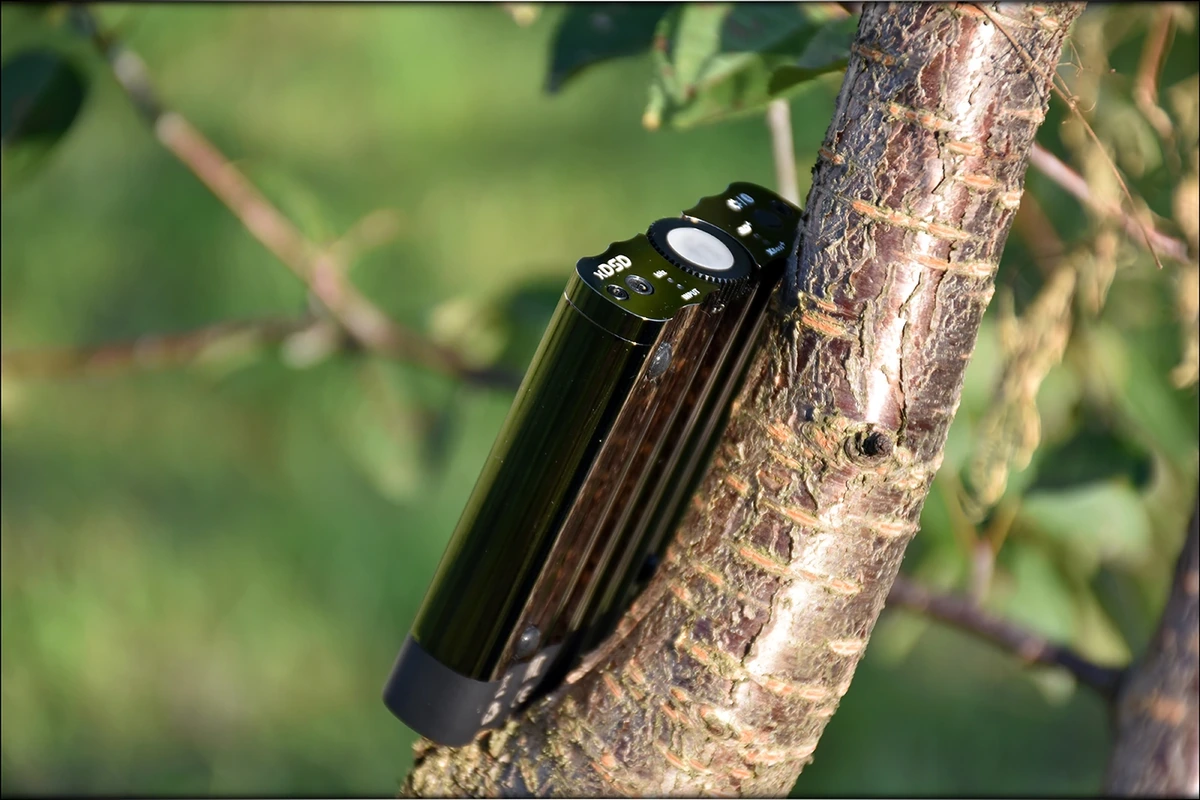
The volume has a button that lights on a few colors, and that one is a really nice addition to xDSD. Since I now have Chord Mojo in for testing, I have to say both companies were nice to add colors to their products, I like it.
The buttons on xDSD nice and clicky, nothing loose. In the front, there is a single button, besides the one on the volume wheel. This acts as a cycle between the effects, and a combination of them. Generally, when xDSD starts, it starts with X-Bass turned on, but with 3D turned off. Pressing the button cycles you through the modes, X-Bass Only, 3D only, both active, and both turned off.
Long pressing the power button will turn on or off the device. Short pressing it, after the unit is already turned on, mutes the sound, and it strats blinking. Good trick to have on hand if you’re walking, and you need to stop your music quickly.
Regardless of how long you press the button, if you first press the Effects Button, while the unit is turned on, then you press the power button, this cycles between the unit being in DAC Mode, where the Headphone Output acts as a line-out, and Headphone Output. If you want to feed an active speaker setup, or a Headphone AMP, you should take into account that using the DAC Mode means that all effects are turned off, as those are integrated in the amplification stage. The nice part about the iFi effects is that those are full analogue effects, so you don’t have to deal with low quality digital effects, but you have some fine-class analogue well-implemented effects to work with.
And as to how well they work, the X-Bass, basically thickens the bass, adds a few dB down low, and a few dB in the whole bass, it is a nice effect for a headphone that needs a little push. It is not a very strong effect, somewhere around 6dB of bass or less are added in practice. The bass doesn’t bleed in the midrange, so you can expect a clean, and nice-feeling impact added to your music. The 3D is a little more fiddly, it will work really well with some headphones, but it won’t work quite that well with others. This is a slightly more complex approach and it basically enhances certain areas in the upper midrange, treble, and high-treble to get more width in the sound. I find it very useful for headphones where I’d naturally enhance the treble, like Audeze LCD-MX4, but I don’t engage it when using Sennheiser IE800.
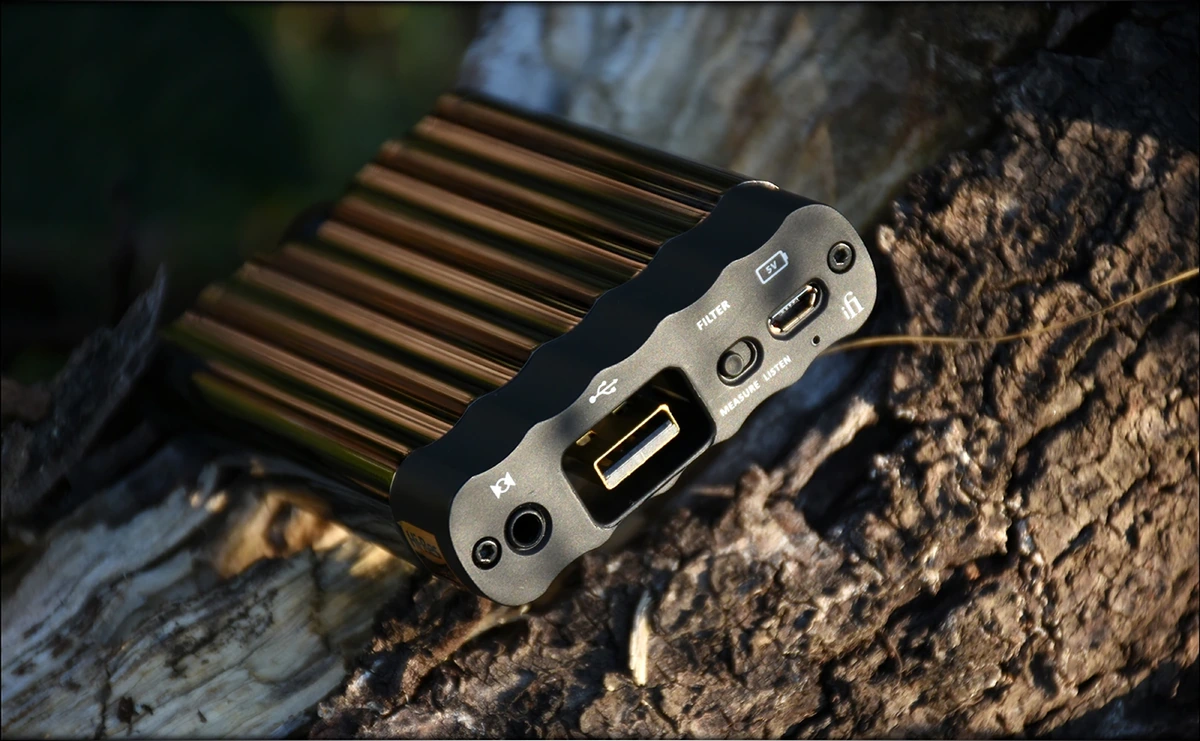
At the back of the device, you can find the main USB Input, which is Type-A, which is not that unusual in today’s devices, but rather rare outside of audio applications nowadays. There is a microUSB port for charging, as xDSD does not charge from the main USB plug, or at least out-of-the box it doesn’t. This means two things, one wonderful, and one slightly inconvenient. The wonderful part is that you can connect xDSD to virtually any smartphone, and it won’t drain your smarty like crazy, so you can totally use it without any stress. The inconvenient part is that you need to connect two cables to it if you’re using it as a Desktop USB DAC or Desktop DAC/AMP, and you occupy two USB ports, which, if you have a laptop with just few outputs, may mean that you require to consider an external hub.
Another important feature at the back is the Measure / Listen knob, which basically sets the Interpolation Filter to a measure mode (more natural sound, smoother, better suited for musicality and music), and listen (which basically reproduces perfect measurements, but sounds a bit too textured, has a tad too much detail in the midrange, which may be fatiguing). Nowadays I find myself using “Listen” more regardless of the headphones xDSD is connected to.
The software tends to be glitch-free, and I haven’t ran into a single software glitch a single time, though I do consider that having the single LED power indicator at the back, just below the microUSB charging connector makes it hard to notice, and I ran out of power once or twice because of it.
I found it a major improvement on xDSD, compared to iDSD BL Micro, that the rubber legs are already set in place.
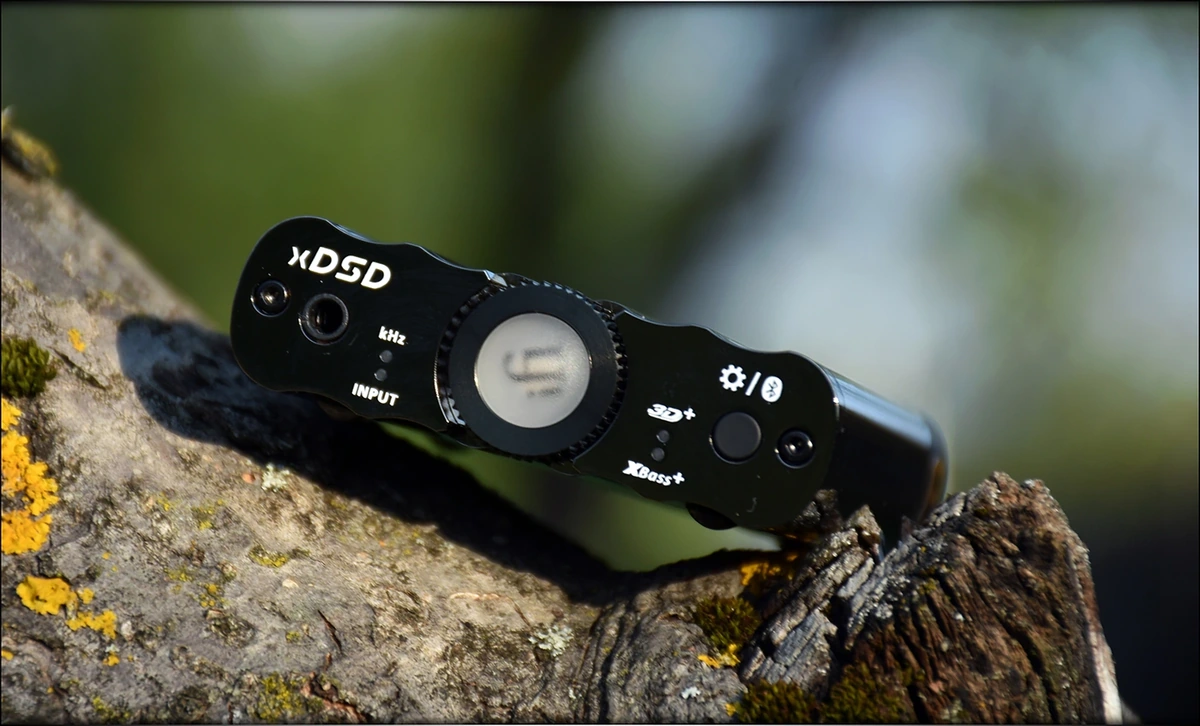
The unit gets warm in usage, but it never struck me as hot, and if it is cold outside, it doesn’t even get warm, if you’re pocketing it while walking.
Now, compared to most other iFi products, this is probably where they made the most major improvement, xDSD is truly pocketable! In fact, it is so pocketable, that I never even brought my DAP / Stack bag with me to Bucharest, and I left it at my home, last time I visited that place. Of course, now it’s Winter in Romania, and quite cold, so it fits easily into jacket pockets, but still, I love how little it adds to the size of my smartphone.
Connected to a PC, it simply works, the iFi USB drivers are pure love, simple and reliable, it works plug and play every time, and it kept working through all Windows Updates.
I found a minor inconvenience in the fact that you need to activate the USB BT by pressing the effects button after it has already been paired. Not a major thing, but it made the pairing process a bit more complicated than it needed to be. The sound out of BT is quite different from the sound straight from a USB Input, and not in a necessarily positive way. There are headphones that sound better with BT connection, like AIWA ARC-1, but here, xDSD sounds better, considerably better, using its USB input rather than Bluetooth.
On the right side, there is no delay in using it as a USB DAC, to watch movies and other content, and there is no delay when using it as a USB DAC from PC.
All in all, iFi xDSD is built like a champ, stands well to usage, and has all the bells and whistles you could wish for in a device at this price, but I’d consider using the wired more whenever possible.
Sound Quality
The signature of iFi xDSD is quite the one, rather neutral, clean, clear, well separated, and with a great amount of detail. If we’re talking about devices in this price range, it needs to find with other 400 USD devices, so even the bigger iDSD Black Label Micro is among its enemies, as well as DAPs in this price range, like Cayin N5ii, and Opus #1s.
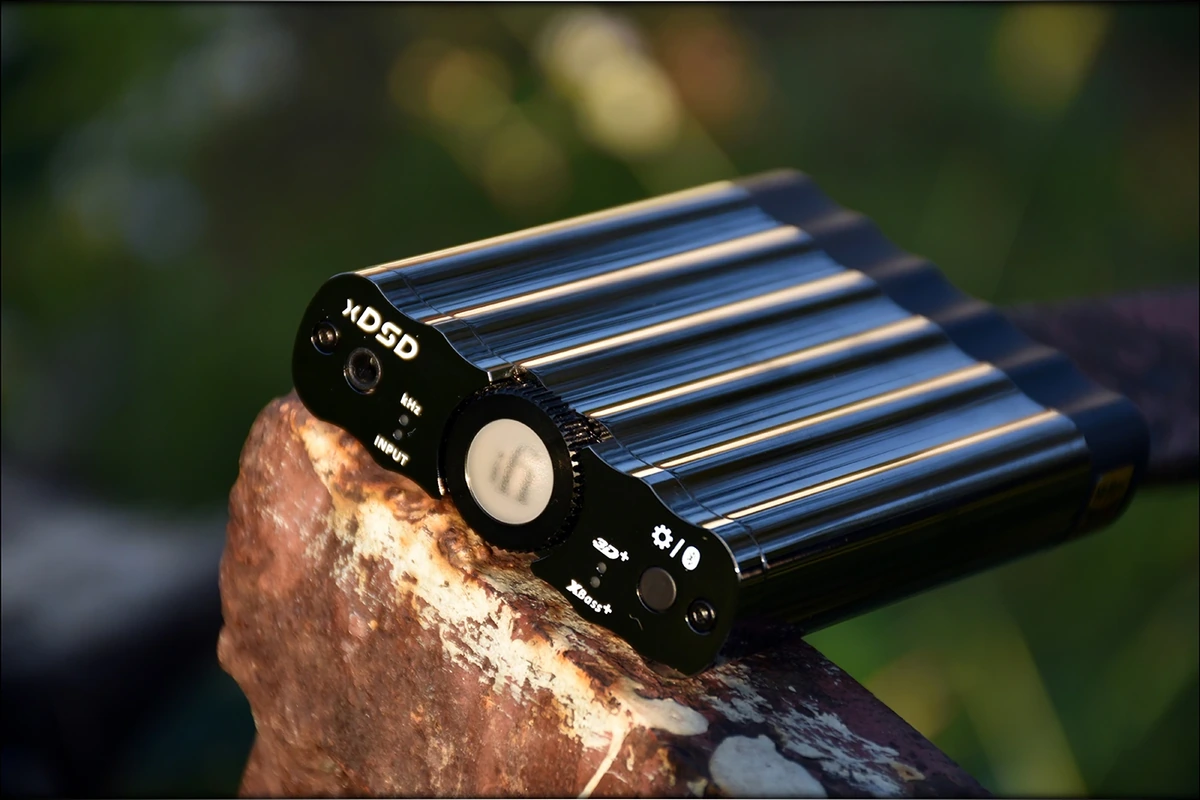
This being said, the bass of xDSD is natural in speed, working well with all types of music and all kinds of headphones. When engaging the X-Bass setting, you get a larger bass, with a better impact and overall presence, much more pleasing with headphones that don’t have enough bass. It actually has a really positive impact on IEMs like Sennheiser IE800, which may be a tad bright and too thin at times, giving them just a bit more thickness to balance out their really sparkly top end. I can hear a lot of deep hits with xDSD, when connecting it to LCD-MX4, and engaging this X-Bass, and the overall bass of the device is solid enough to make a name for it.
The midrange is fairly neutral, without a strong coloration either way. If there is something, there is a fine tilting towards a very slight warm tonality, but this may be given also by the “Listen” setting I used predominantly when testing it. The overall revealing ability is fairly good, especially for this price range, and it is always fun to hear something more organic, as this is a good word to describe xDSD. It is a touch less organic and less smooth than its bigger brother, iDSD Micro BL, but this may be for the better, as it gives xDSD better versatility with metal and more aggressive music. Voices are natural, and ever so slightly forward, pointing to an ever-so-slightly intimate soundstage.
The treble is sparkle and extends very well, but doesn’t lean towards being too smooth, nor towards being too grainy. It is just as textured as it should be, as present as it should be, really neutral, and well expressed. The good overall treble actually balances out the slightly forward soundstage to give xDSD a nicely-large soundstage, with air and space between instruments being good enough to mentally place things in the musical scene.
Soundstage
The soundstage of xDSD is actually not the widest out there, being on the verge of what I’d call slightly intimate, but then there’s the good part with having the 3D effects employed by iFi. While they may not sound their best with absolutely every singe IEM and Headphone out there, those effects worked just fine with about 80% of the headphones I tried them with, bringing good results with Audeze LCD-MX4, Ultrasone Signature DXP, and FLC8N. On the other hand, the enhancement was a tad much with Sennheiser IE800 and HIFIMAN RE800Silver. In its natural shape, the soundstage is a bit wider than it is deep, presenting a few layers of music between the listener and the source, with the right earphones. The stereo separation is incredibly good though, and there’s very little to no crosstalk, and the instrument separation, is excellent, as well, leading to a fun and enjoyable final presentation.
Textures
The ADSR / PRaT area is now renamed to Textures, as I always made the connection between the impulse response of a headphone with how the texture is rendered, since I composed music using synths before, and this made sense, but I realised that it may be more straight-forward to name this area Textures. With the filter engaged to “Listen”, you get an organic and natural overall presentation with a natural to slightly slow response of the bass, a natural response of the midrange, and a natural response of the treble, textures are fairly natural all-around. Engaging the 3D soundstage doesn’t change this, but engaging the X-Bass slows down the bass a little, resulting in a slower overall bass.
With the Filter engaged to “Measure”, xDSD plays a quicker overall texture in the midrange, and quite considerably so, along with a slightly quicker texture in the bass and the treble. Again, engaging X-Bass will slow the bass a bit, but now by a large margin. This one setting will be awesome for those who are really into hearing more detail, and who want to give their IEMs and Headphones a bit of an “Etymotic” flavour, without getting a pair of ER4XR themselves.
Potable Usage
xDSD is a portable, and a desktop unit at the same time. It is mainly made to be portable, by having a small body design, being lightweight, and being easy to stack, but it can also play the role of a veritable DAC in a complex audio system, for those who want to have one device to take with them when traveling around.
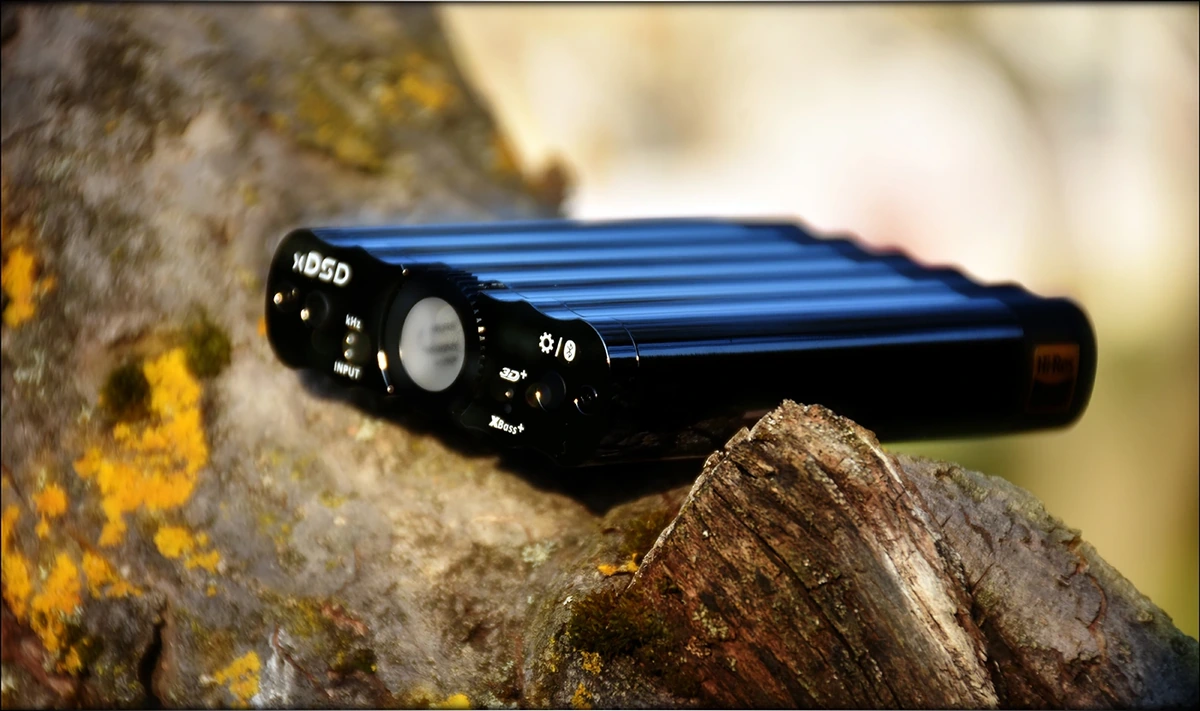
As a portable device, it is light enough to make a good stack, and with the proper iFi USB OTG cables, it actually makes a neat and tidy setup. There are no downsides to using it in this mode, it has good controls, well-placed buttons and controls, the volume wheel is easy to access while in a pocket, and you can mute it easily while walking, so you don’t have to worry about that, you don’t set the Measure / Listen filter often, so that button is in the back, and the setting button in the front is actually welcome and well-placed, easy to access.
The battery life is good enough, but I’d prefer for future devices to be a bit thicker, but feature a slightly longer battery life, as with xDSD, it lasts about 8 hours when playing music almost at max volume, for the entire time. This is not bad by any means, it just happens that I sometimes take longer trips and realise that I need a backup or a charger of some sort.
It is good for hiking and exploring, if you’re around your town though.

Bluetooth, while not sounding as good as wired with xDSD, has excellent performance, and you can throw it in a bad, and enjoy your music from your smartphone, but this usage makes less sense, since you’d have to adjust the volume using xDSD’s wheel anyways, as that has a well-implemented volume control, while adjusting it from your smartphone will degrade sonic quality.
As a desktop unit, it looks nice, it looks fun, and sits well on a desk, its DAC is potent enough to make up for a great overall experience. Here, the only two complaints one can have, are the cable in the back, the blue one, for the USB DAC function being rather thick and more complicated to hide, if you want a really neat and tidy desk, and the charging cable, which adds to the cables you need to manage for using it (also the cables you need to connect / disconnect when using it).
All considered, xDSD has great portability, much better than the original iDSD Micro BL had, and it is worthy to be named a nice portable DAC/AMP. In fact, when compared to something like DH1000 from HIDIZS, which I liked quite a bit, it is more portable, because DH1000 has no rubber feet, and it kinda rubs together with the smartphone or DAP, while xDSD stays well separated from it.
Comparisons
There are lots of products that should be compared to xDSD in terms of ability, but for today, iDSD Black Label Micro (500 USD), Opus #1s (400 USD), and FiiO Q5 (350 USD) will be today’s enemies for iFi xDSD
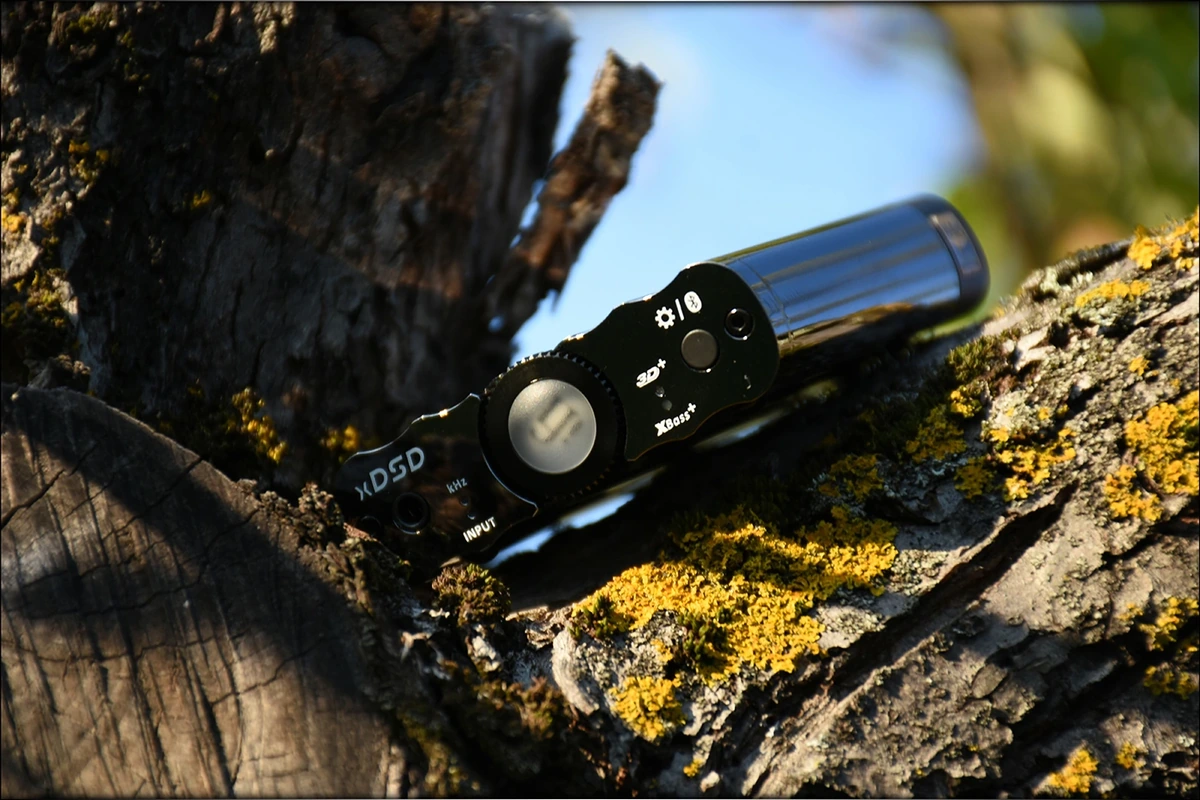
iFi xDSD vs FiiO Q5 (AM03A) – Of course, we should start with the more dangerous enemy. iDSD BL is just the bigger version, and #1s is a DAP, so the one devices that places xDSD in most danger is iFi’s key card, Q5. The package they come with is all-inclusive for both, both have a good amount of accessories, both are well packaged, and both are nicely presented. The build quality is full metal for both, both are solid devices, and both have well-placed buttons for one handed control, being easily stackable. The one thing you start to notice as a difference is the fact that Q5 has a removable AMP bottom, which makes for a neat difference, when you consider that for 100USD you can upgrade Q5 to an entirely better sound (with AMP5). xDSD gains some points in terms of aesthetics, with its glass finish, but loses some when it comes to the Bluetooth abilities, as it has its sound changed quite a bit in BT mode, while Q5 sounds more similar between its bluetooth and wired mode. The battery life is similar, too similar to make up for a real difference, and the usage is flawless for both, when it comes to their software, neither has any bugs to talk about. The sound, though, is quite different. The first difference that comes in sight, is FiiO’s versatility, with a modular design, you’re not locked to AM03A, which is a very wide-sounding AMP, wider than xDSD in its default configuration, though xDSD is a bit deeper in its scene presentation. The detail levels are similar, with xDSD being more organic in the way it presents each musical note, and with Q5 with AM03A being more revealing, more precise. Here’s a matter of musicality vs technical ability, and each does their job quite well. The signature is neutral for both, and both are good at driving full-sized headphones, but while xDSD is better than Q5 with its AM03A, if you add AM05 to Q5, it has better driving abilities, with better control, and more power in actual usage. Of course, then Q5 becomes 50$ more expensive than xDSD. Now, if you’re wondering which you should get, the first question you have to ask, is whether you want a one-piece device, like xDSD, or a modular device, like Q5. Then, if you feel you’ll upgrade Q5, or just want the modularity to be there, because if you’re not taking advantage of adding AM05 to Q5, then xDSD makes a better overall deal. If you want to take the time to upgrade Q5, tweak it, and if you want to take advantage of its Bluetooth, then it may make a better overall device for you, but keep in mind the design and ergonomics of each when making your choice, as, as much as we want to deny it, we all like one better than the other aesthetically.
iFi xDSD vs Opus #1s – You may wonder who would ever place a DAC/AMP against a DAP, but you also have to wonder, if you have exactly 400USD, and you want to make a solution for music listening, wouldn’t you consider both options? The truth is that most people don’t always consider all the options they have, but sometimes, something that wasn’t initially evident may actually have been a better overall ending. With Opus #1s, the build quality and package are not very relevant. What is relevant though, is the fact that Opus #1s has two microSD slots, and almost no DAP inexpensive enough, and absolutely no smartphone has two microSD slots, so here, if you have a huge music library, you’ll probably want to go with #1s. Then, the ergonomics, are better for #1s compared to xDSD, because, as much as we’d want to deny, #1s is a single device, while xDSD will always be part of a stack, and that means a longer device, with cables hanging out, and all. Here’s where the winning points for #1s end though, because xDSD has much better Bluetooth abilities, as it can connect to a wider array of devices. This being said, xDSD is more of a BT received, while #1s is more of a BT sender. The sound, though, is generally in favor of xDSD, and this explains why you may want to invest more in a DAP that has similar sonic abilities. xDSD has better driving power, and better overall control, better detail, and a more organic sound. #1 makes up for those a little, by having a slightly wider soundstage, but then xDSD wins in terms of dynamics as well. This being said, if you’re looking for a DAP at this price, and if you have a huge collection, #1s makes a lot of sense, while if you’re looking for a DAC/AMP, and if you like Streaming music (you can do that with a smartphone you’d use xDSD with), and if you value sonic performance above all, xDSD provides a better sound for virtually the same price, making the better choice, provided you already have a source (which reminds me that #1s makes an awesome source, and you could pair them together, if you already have one of them).
iFi xDSD vs iDSD BL Micro – The big boy enemy of xDSD was lefty at towards the ending of the comparisons area, mostly because it doesn’t make much of a comparison, in terms of who’d use both. In short, BL Micro is a much much larger device, 5-6 times larger in volume when compared to xDSD. It is just as well put together, but it is much larger, with a much more industrial look to it. iDSD Micro has no Bluetooth, but it does have the X-Bass and the 3D sound effects built-in, which means you can still take advantage of iFi’s excellent enhancement implementation (This is not a DSP, Digital Signal Processing, as xDSD has fully analogue circuits doing all the work for your ears). One big difference in desktop usage, is that iDSD BL Micro has a dedicated Line Out Output on the back, which xDSD does not. iDSD BL Micro also requires just one cable for both data and power, while xDSD requires two, making iDSD more suited for desktop usage, if you want a clean desk. Now the sound, is much much better on iDSD BL Micro. It has much better detail, a much better driving power, a lot more detail, an insanely larger soundstage, with a deeper presentation, with more layering and a better instrument separation. This being said, it is more laid-back, and more smooth, while xDSD is more energetic and has a more uplifting overall presentation. Now, if you might be wondering why would you go for xDSD while the same company makes a much better sounding product, the answer is that iDSD BL Micro is not really portable.
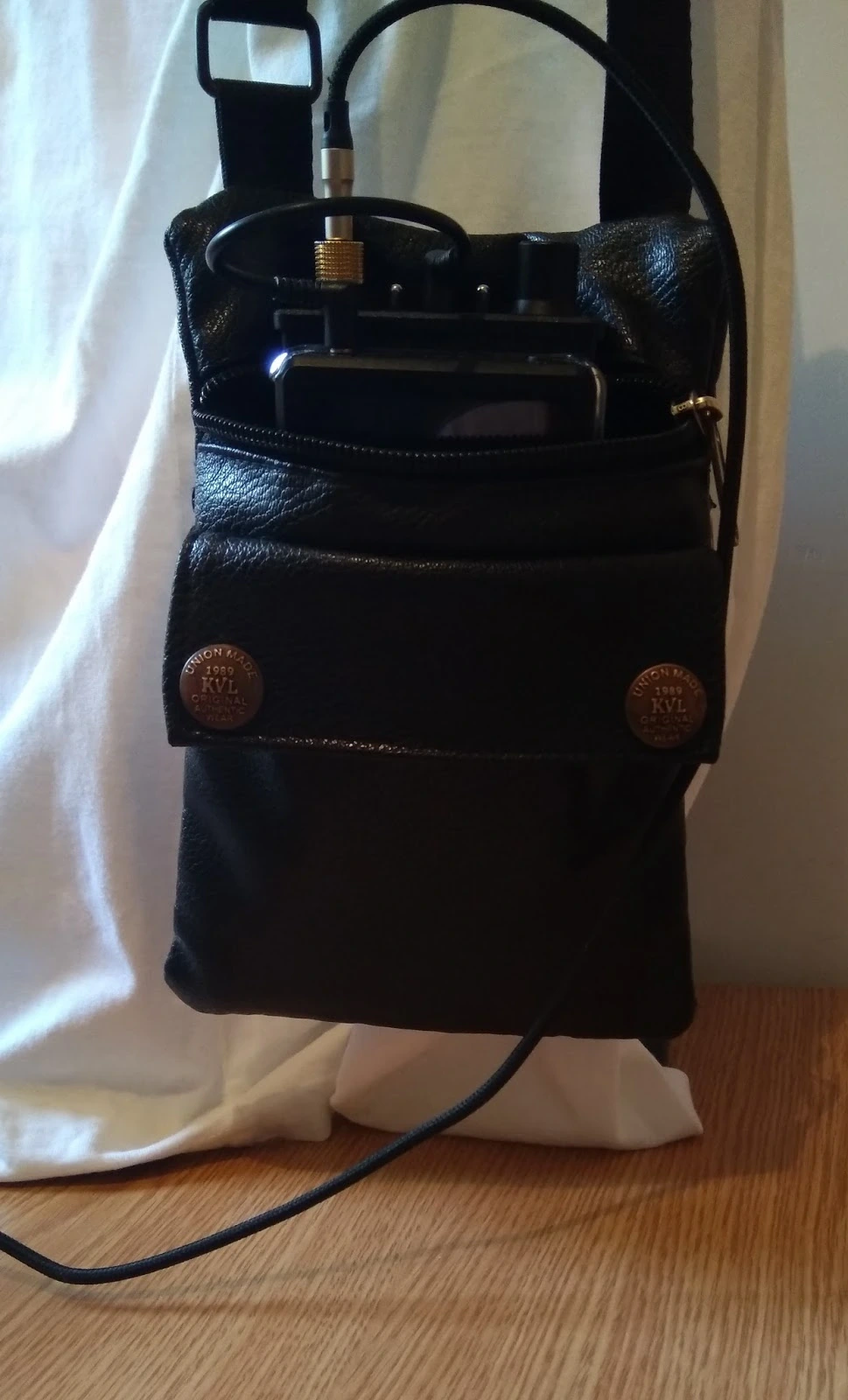
It is transportable at most. This being said, xDSD is fully portable, easily stack-able, and you can always enjoy your favorite metal piece in the bus, without having people staring at you both because you’re a meatlhead and because you have a weird device, now their only reason to stare being the questionable music they can hear, because you are listening to aggressive metal at high volumes… Wait, no, this is usually me doing this. At any rate, if you’re looking for a neat desktop device, you should totally consider iDSD BL, but be noted, that it isn’t what I’d consider taking with me when meeting the parents-in-law and trying to make a good impression, while xDSD is something you can even take with you at a starbucks and enjoy a coffee, without raising any eyebrows. Also, of the two, xDSD is the only which has Bluetooth abilities.
Pairing
Now, xDSD pairs really well. So well, that I think it is universal. It would be possible to list my entire collection of headphones here, and it would still make great pairings, but I’ll pick a few favorites that really pair well with xDSD, and which make a neat setup for both taking a fun walk through a busy city, traveling, or just discovering joy while at home.
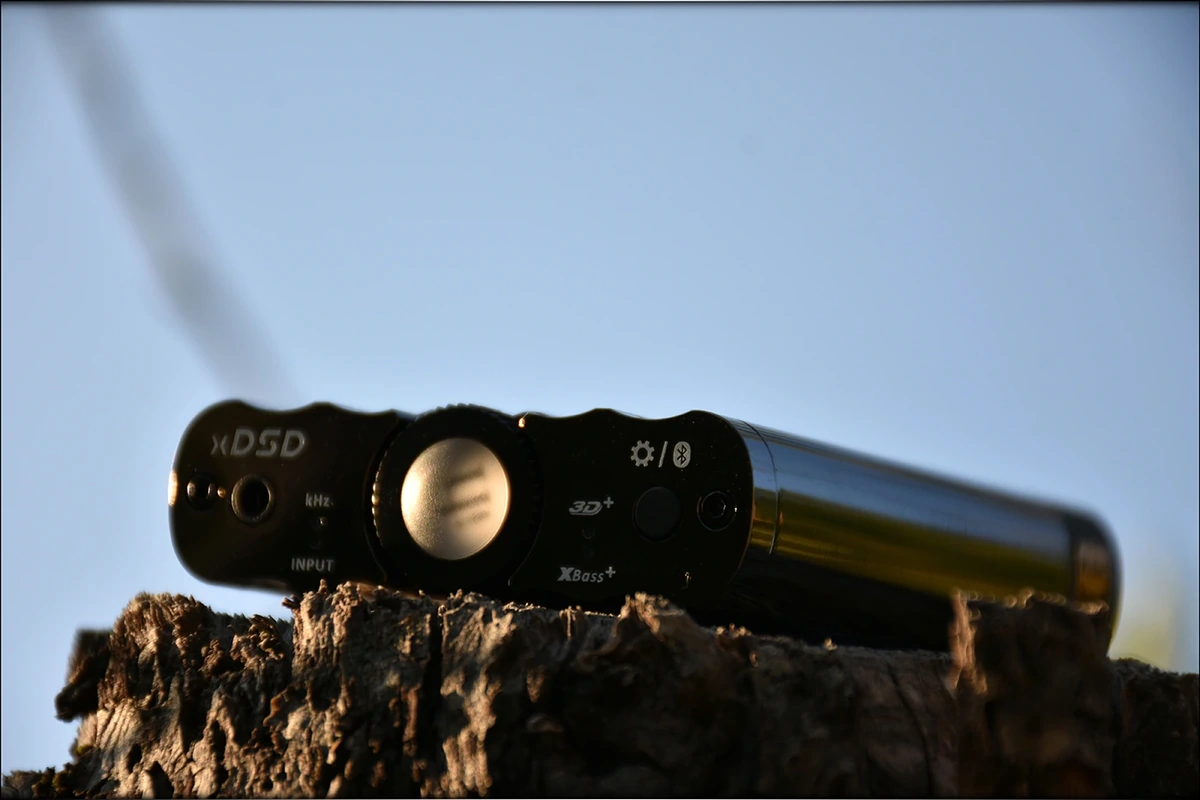
iFi xDSD + Ultrasone Signature DXP – This is one pairing I’ve used quite a lot, not only because it sounds good, but also because it is portable, and looks stylish. The glass on the cups of Signature DXP pairs really well with the glossy surface of iFi xDSD. Now, the sound, is actually helped by those little features of xDSD, the 3D and the X-Bass, as, although Signature DXP does not require any of those to sound enjoyable, they give it a bit more sparkle, a bit more impact, making the whole headphone sound more dynamic, more explosive, more V-shaped, more vivid, more impressive. The textures with xDSD are rendered really nice and organic, and while some older Ultrasone Headphones were a tad too sparkly in the top end, with xDSD’s organic nature, and with Ultrasone’s new technology, you can always expect a natural experience with this pairing. This pairing is versatility at its finest, being a pairing that can play both your Led Zeppelin, Jill Tracy and even Rob Zombie without batting an eye. Furthermore, there wasn’t a single music style that sounded bad on them, and I could open heartedly recommend the pairing regardless
iFi xDSD + FLC8N – While the review for FLC8N just went live, and I had a lot of fun writing about them and listening to them, pairing them with xDSD is something I haven’t talked about in their review. Now, FLC8N is one of those IEMs that really doesn’t require the X-Bass, nor the 3D effects of xDSD, both of those being potentially detrimental to the overall sound of FLC8N, giving them maybe a bit too much sparkle and maybe a bit too much bass. Even so, in its default configuration, xDSD is able to show excellent control and detail with FLC8N, and the soundstage is quite huge, which you can expect from FLC8N paired with most sources, while the midrange is rather organic and natural. The other big surprise with FLC8N is the treble, which is very sparkly, and very clear, but it is never too bright or grainy, making up for a really fun trip with both electronic, and metal music. Jazz and pop also sounds quite intriguing and blissful. The one type of music this pairing isn’t really made for is vocal and voice-centric music, as FLC8N has a recessed midrange, and regardless of the fact that xDSD has a slightly forward midrange, there are other options for those who want the midrange to be the most forward element in their music.
iFi xDSD + iBasso IT04 – This is another pairing I am really a fan of, not only because the organic midrange of xDSD pairs really well with IT04’s smoother character, but also because IT04 is one of the more neutral IEMs, and it really sounds better when you engage the X-Bass feature on xDSD, resulting in a much more fun and pleasant overall sound. Of course, there are lots of people who prefer the quick and tight experience of IT04 as it is, and don’t feel the need to enhance it in any way, but if you ever wanted to make things a little balanced, one of the most naturally sounding solutions is at your fingertips, which is part of why xDSD is so convenient, because it can improve the sound without you having to know how to EQ something out, and without all the hassle of having to switch between EQ profiles between headphones. Makes a big difference for those who just want a simple device that works.
Value and Conclusion
We had a long nice talk about xDSD from iFi, and it is time to reach a conclusion. Let’s begin by admitting that we’ve been talking about a 400 USD device, which is not cheap by any means, and this is quite up in the midrange for DAC/AMP devices, being quite close to what a full-blown desktop Tube Amplifier like Felix Echo costs. This being said, iFi xDSD makes itself remarked in a few ways that will surely allow it to survive in the market, even in this crazy-quickly changing world.
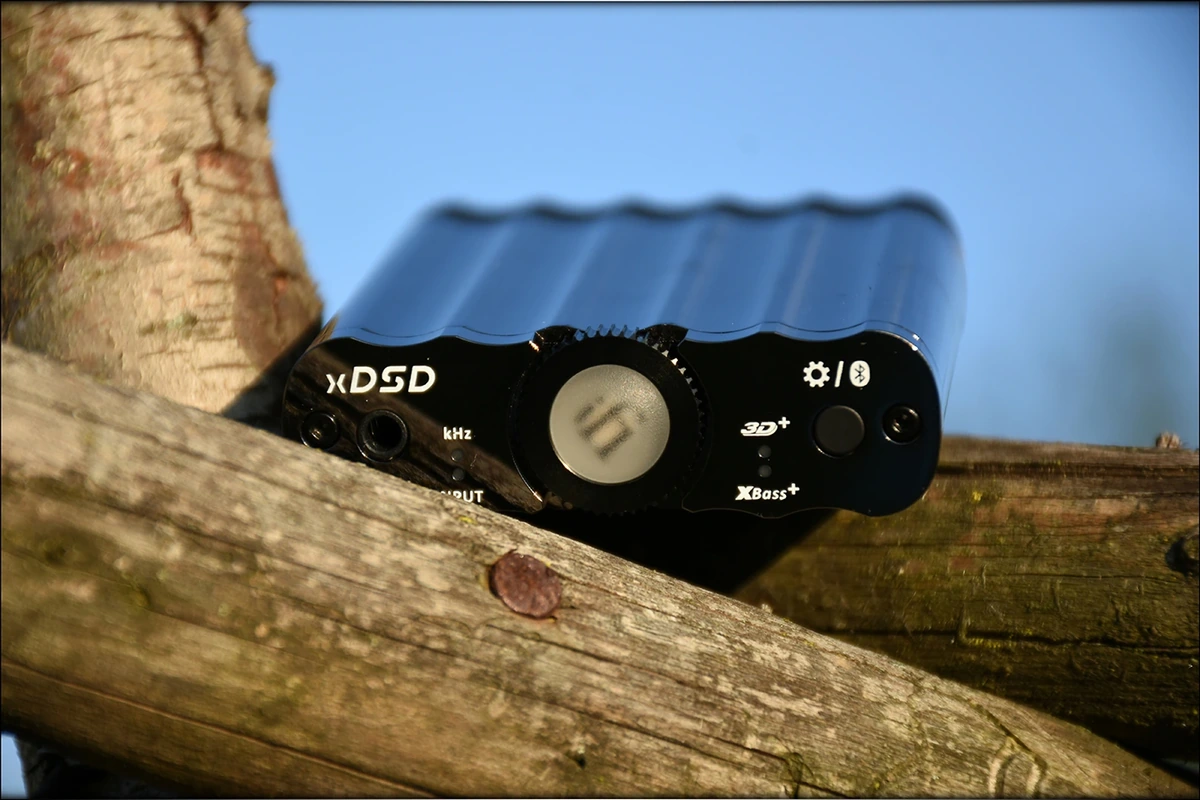
First off, the build quality is excellent, and FiiO thought about everything when they designed the package, so you don’t have to worry about your favorite accessory missing. You can even add some of the best OTG cables for a little price, by also ordering one of iFi’s own OTG cables when getting an xDSD.
The build quality is really solid, as it is quite literally make mostly from metal, with a glossy, high-end look, and with an accessible front dial for adjusting volume / muting the unit, with an effects button right next to that, and with the audio jack on the same side. The back further allows for more sonic customization, with a Listen / Measure Filter, which will change the way textures are reproduced.
The effects are implemented well, and they sound very good, not coloring the sound in a negative way, and I found myself using them more often than not. There’s even a Bluetooth connection, which has some further effects sprinkled into it, but the unit will still sound a bit better when using it via a cable than when using it by BT.
The overall device operation is very easy, and intuitive, and it is hassle-free, like is the DAC operation, as its software has been written really well.
The sound performance is quite good, if you like a slightly intimate sound, with a natural and organic overall presentation, a fairly good depth, and a good resolution for the price. You get all the extension you can want both ways, and xDSD is easy to pair with virtually anything, plus you get the advantage of having the X-Bass and 3D effects at your fingertips, making xDSD quite a good overall options regardless of whether you have a bright headphone, and you’d like it to be a bit darker, or if you’re having a dark headphone, and want to give it a little more sparkle.
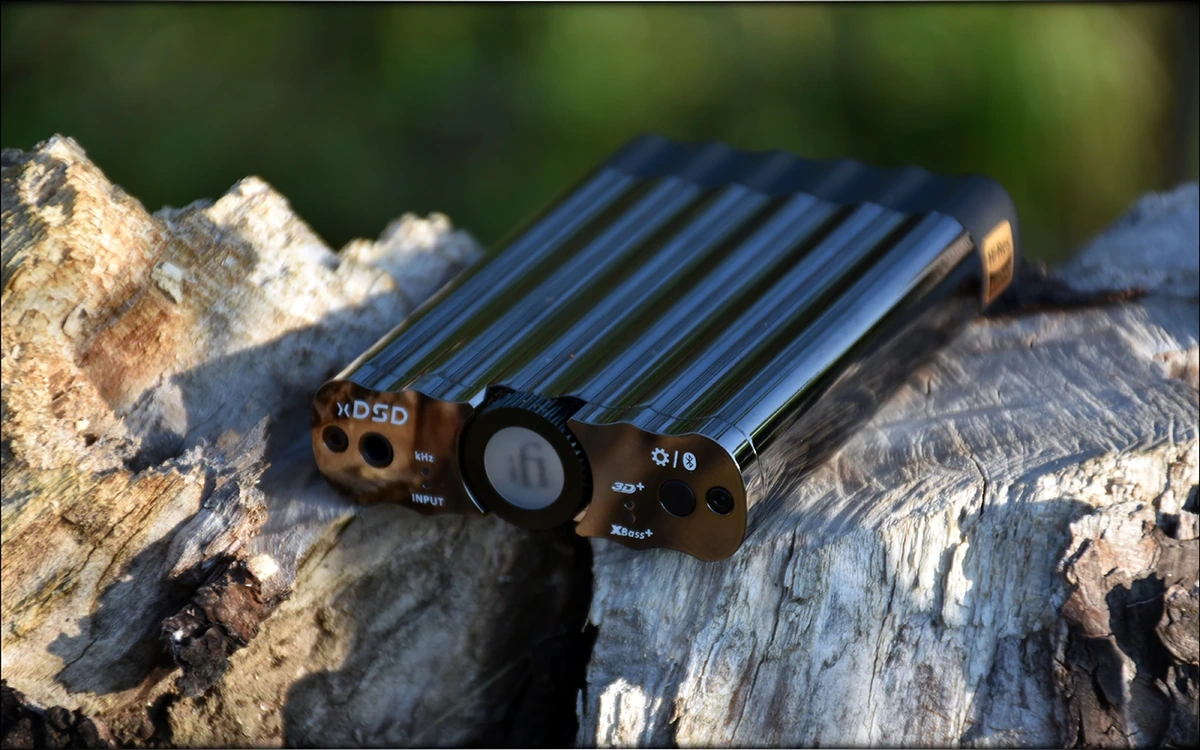
In the end, iFi made a nifty little device, that can do a little of everything, and which doesn’t fail in any way to satisfy the needs of the modern audiophile, including the need of a nice-looking device, making xDSD is easy to recommend to anyone looking for a simple-to-use, ergonomic and versatile device that can power almost anything that’s portable, and which can sing any way your heart desires.
Product Link
You can get the mighty xCan from www.amazon.com here: https://www.amazon.com/Portable-Headphone-Amplifier-Bluetooth-Connectors/dp/B07FTFZ8WF/
--- Please remember to stay safe, and always have fun while listening to music!---
- If you have a dime to spare, please donate, and help us! It would make the day brighter for me and my wife-
Full Playlist used for this review
We listened to more songs than those named in this playlist, but those are excellent for identifying a sonic signature. I recommend trying most of the songs from this playlist, especially if you’re searching for new music! The playlists are different for Spotify, Tidal and Youtube, and based on the songs I enjoy and are available on each!
https://www.youtube.com/playlist?list=PL_cjBXGmwSHSdGcwuc_bKbBDGHL4QvYBu
https://open.spotify.com/playlist/5J3oloz8Riy9LxEGenOjQ0?si=979ba4f082414be7
https://tidal.com/browse/playlist/330fd544-8e5b-4839-bd35-676b2edbb3d5
--- Contact Us ---






[…] HD, aptX LL, aptX, and a large 3000mAh battery. It will be compared to other DAC/AMPs, including iFi xDSD (400 USD), iBasso DX160 (400 USD), Palab M1 Mini (500 USD), and Soundaware A1X PRO (700 […]
[…] It will be compared to other high-end DAPs and music players, including Shanling M3X (350 USD), iFi Audio xDSD (400 USD), QLS QA 361 (800 USD), FiiO M11 PRO (650 USD) and iBasso DX240 (950 […]
The imaging is great on the XD05PLUS. Details too. The treble is normal. Attack is great. The background is not very black indeed, and the channels have good balance above about 9-10 o'clock. It seems very reliable so far, also XTENIK has great support for it.
Thanks. Awaiting your detailed review for the xd05 Plus. Is the stereo image on the xd05 plus wide and deep ? Separation and imaging ? Is it too musical or analytical ? Detail retrieval is good or rolled off treble, and attack decay ? I had heard that it has channel imbalance and not the darkest background? Are those deal breakers? or can one live with it, in trade of for more power? Also, another factor i have in mind, how long do one of these ideally last? As i plan to use for more than 5 years at least. even more. So, reliability also plays a major role. Really appreciate your guidance, mate 🙂
Hi there! Fir K712 in particular you need a bit of power, I would say go with Q5s or xDSD, both should do a good job. Also xDuuo XD05 PLUS
What about the iBasso DX 160 ? Can it do justice to AKG k712's wide soundstage ? Or u think Fiio q5s is better, considering my above parametres ? As
Hi there, Q5s has less driving power than xDSD on Single Ended. It should have more on Balanced, I tend to compare 3.5mm vs 3.5mm outputs rather than the balanced ones because even now most IEMs and cables come with SE cables. If comparing balanced, Q5s should be more powerful, more punchy, more controlled, it is a real champ really.
Hi there, just a small query, fiio q5s has 110 mw of power @ 300 ohms as per their website (on its balanced out). Compared to that the xDsd has just 48 mw @ 300 ohm. But still u feel q5s will have lesser driving power in real world circumstances, as compared to xDsd ? Thanks
Hello there! Given your situation, I would suggest xDSD if you need the wider soundstage. Mojo has a liquid, fluid sound, but the stage is more intimate than xDSD, espoecially if you will engage the 3D stage on xDSD. On the other hand, Mojo has a slightly better detail. xDSD has better overall driving power at maximum. Mojo gets warmer during usage. FiiO Q5s is a great alternative if you can grab one and if it is within budget. More versatile than both xDSD and Mojo, although it has slightly less driving power than xDSD
Hi buddy. I did some reading, and found out that in India, xDuoo & Earmen dont have official warranty support. Additionally, there are shipping charges, since they are not available locally. So then, with these 2 ruled out, and Micro BL being juts out of my budget, my choice is currently limited to xDSD. With respect to the sounstage criteria, how is the Chord Mojo ? As in India, xDsd & mojo are similarly priced? Apart from that any further alternatives ?
Thanks a ton for your guidance.
Thanks a lot for the valuable inputs. WIll stay tuned for your XD05 + review.
Hi Mehul, I was also after this for a really long while. To be honest, for SQ alone and for everything, xDSD is quite great, but you get a wide soundstage if you engage the 3D+, othwrsie, it is pretty normal-sized. If you're looking for larger, iFi iDSD Black Label has a really deep soundstage, and also pretty wide, but the overall tuning is odd, very smooth midrange, hot treble, and deep, hard-hitting bass. I would also suggest considering earmen TR-AMP, it is not the widest, but for 250 USD it is best buy. I also just received the XD-05 PLUS from xduuo and XTENIK, and while I just started using it tonight, it impressed me in every way. The other issue is the power you would need, K712 PRO needs quite a bit of power to sound right, and it appreciates a warmer signature in general, but if you plan on upgrading it, it is best to stick to somehting that sounds great out of the box, and which has tons of power, which is why I would suggest Earmen TR-AMP, iFi xDSD, iFi iDSD BL, and XD-05 PLUS from XTENIK.
Any of those would be just fine, and they are pretty different, but between them, xDSD is the most linear, iDSD BL is U-Shaped, has odd treble and really smooth mids, not a ton of textures, yet it is very fluid. TR-AMP is slightly warm overall, but great value, and XD-05 PLUS has best value of this list, especially for the driving power, but it is not the most ergonomic, and quite heavy, but the SQ so far is really outstanding.
Hi. Excellent reviews. Very detailed. Keep up the great work, buddy.
I wanted your help in choosing a "Portable Dac/Amp" (under 500$) which would be stacked with my phone for use with my AKG K712 Pro (& maybe something even better in the future).
One of my primary criteria is that the dac/amp should have a W-I-D-E and DEEP soundstage & pin-point imaging and layering.
I am NOT concerned with extras like bass boost, 3d+, bluetooth etc etc as I enjoy music in its "Stock State".
I have been researching for months, but I'm unable to find anything that would fit the bill. Sound quality matters the most, above everything else.
So, your advise here would be highly appreciated. Thanks.
Warm Regards,
Mehul
Hi. Excellent reviews. Very detailed. Keep up the great work, buddy.
I wanted your help in choosing a "Portable Dac/Amp" (under 500$) which would be stacked with my phone for use with my AKG K712 Pro (& maybe something even better in the future).
One of my primary criteria is that the dac/amp should have a W-I-D-E and DEEP soundstage & pin-point imaging and layering.
I am NOT concerned with extras like bass boost, 3d+, bluetooth etc etc as I enjoy music in its "Stock State".
I have been researching for months, but I'm unable to find anything that would fit the bill. Sound quality matters the most, above everything else.
So, your advise here would be highly appreciated. Thanks.
Warm Regards,
Mehul